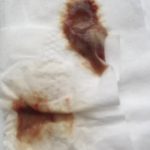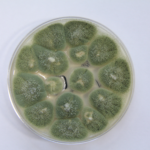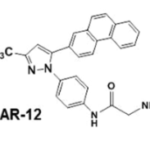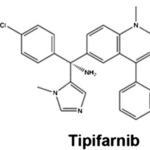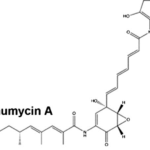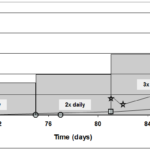Date: 26 November 2013
Secondary metabolites, structure diagram: Trivial name – ochratoxin A
Copyright: n/a
Notes:
Species: A. affinis, A. albertensis, A. alliaceus, A. auricomus, A. carbonarius, A. citricus, A. fonsecaeus, A. lanosus, A. melleus, A. niger, A. ochraceopetaliformis, A. ochraceus, A. ostianus, A. petrakii, A. sclerotiorum, A. sulphureusSystematic name: 2-(5-chloro-8-hydroxy-3-methyl-1-oxo-isochroman-7-yl)carbonylamino-3-phenyl-propanoic acidMolecular formulae: C20H18ClNO6Molecular weight: 403.813Chemical abstracts number: 303-47-9Selected references: van der Merwe KJ, Steyn PS, Fourie L, Scott DB, Theron JJ. Ochratoxin A, a toxic metabolite produced by Aspergillus ochraceus Wilh. Nature. 1965 Mar 13;205(976):1112-3.Toxicity: Potent nephrotoxin implicated in porcine nephropathy. Acute oral LD50 in the male rat 30.3 mg/kg body-weight and in the female rat 21.4 mg/kg body-weight. Recent assessments of toxicity suggest that this compound may be carcinogenic and genotoxic.chicken LD50 oral 3300ug/kg (3.3mg/kg) EFFECTS: CARDIAC: PERICARDITIS LIVER: OTHER CHANGES KIDNEY, URETER, AND BLADDER: OTHER CHANGES Applied Microbiology. Vol. 21, Pg. 492, 1971. chicken LDLo subcutaneous 11mg/kg (11mg/kg) EFFECTS: LIVER: HEPATITIS (HEPATOCELLULAR NECROSIS), ZONAL Applied Microbiology. Vol. 21, Pg. 492, 1971. domestic animals – goat/sheep LD50 intravenous 1mg/kg (1mg/kg) EFFECTS: LUNGS, THORAX, OR RESPIRATION: ACUTE PULMONARY EDEMA LIVER: OTHER CHANGES CRC Critical Reviews in Toxicology. Vol. 2, Pg. 499, 1974. Link to PubMedduck LD50 oral 500ug/kg (0.5mg/kg) EFFECTS: LIVER: FATTY LIVER DEGERATION Nature. Vol. 205, Pg. 1112, 1965. mouse LD50 intraperitoneal 22mg/kg (22mg/kg) Acta Pharmacologica et Toxicologica. Vol. 2, Pg. 109, 1946. mouse LD50 intravenous 25710ug/kg (25.71mg/kg) EFFECTS: BEHAVIORAL: ALTERED SLEEP TIME (INCLUDING CHANGE IN RIGHTING REFLEX) SKIN AND APPENDAGES (SKIN): HAIR: OTHER GASTROINTESTINAL: ULCERATION OR BLEEDING FROM STOMACH Annales Recherches Veterinaires. Vol. 5, Pg. 233, 1974. mouse LD50 oral 46mg/kg (46mg/kg) Toxicology Letters. Vol. 25, Pg. 1, 1985. quail LD50 oral 16500ug/kg (16.5mg/kg) EFFECTS: BEHAVIORAL: SOMNOLENCE (GENERAL DEPRESSED ACTIVITY) BEHAVIORAL: ATAXIA Poultry Science. Vol. 55, Pg. 786, 1976. Link to PubMedrat LD50 intraperitoneal 12600ug/kg (12.6mg/kg) EFFECTS: BEHAVIORAL: ALTERED SLEEP TIME (INCLUDING CHANGE IN RIGHTING REFLEX) GASTROINTESTINAL: ULCERATION OR BLEEDING FROM STOMACH SKIN AND APPENDAGES (SKIN): HAIR: OTHER Annales Recherches Veterinaires. Vol. 5, Pg. 233, 1974. rat LD50 intravenous 12750ug/kg (12.75mg/kg) EFFECTS: BEHAVIORAL: ALTERED SLEEP TIME (INCLUDING CHANGE IN RIGHTING REFLEX) SKIN AND APPENDAGES (SKIN): HAIR: OTHER GASTROINTESTINAL: ULCERATION OR BLEEDING FROM STOMACH Annales Recherches Veterinaires. Vol. 5, Pg. 233, 1974. rat LD50 oral 20mg/kg (20mg/kg) EFFECTS: LUNGS, THORAX, OR RESPIRATION: CHRONIC PULMONARY EDEMA Food and Cosmetics Toxicology. Vol. 6, Pg. 479, 1968. rat LD50 unreported 22mg/kg (22mg/kg) Indian Journal of Experimental Biology. Vol. 29, Pg. 813, 1991. turkey LD50 oral 5900ug/kg (5.9mg/kg) EFFECTS: BEHAVIORAL: SOMNOLENCE (GENERAL DEPRESSED ACTIVITY) BEHAVIORAL: ATAXIA Poultry Science. Vol. 55, Pg. 786, 1976.
Images library
-
Title
Legend
-
Images and abstract taken from Mert D et.al., Hematol Rep. 2017 Jun 1;9(2):6997. doi: 10.4081/hr.2017.6997. Invasive Aspergillosis with Disseminated Skin Involvement in a Patient with Acute Myeloid Leukemia: A Rare Case.
Invasive pulmonary aspergillosis is most commonly seen in immunocompromised patients. Besides, skin lesions may also develop due to invasive aspergillosis in those patients. A 49-year-old male patient was diagnosed with acute myeloid leukemia.
The patient developed bullous and zosteriform lesions on the skin after the 21st day of hospitalization. The skin biopsy showed hyphae. Disseminated skin aspergillosis was diagnosed to the patient.
Voricanazole treatment was initiated. The patient was discharged once the lesions started to disappear.
 ,
, 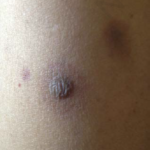 ,
, 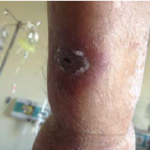 ,
, 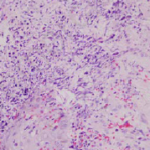 ,
, 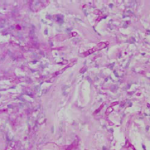
-
A pile of woodchip stored for use in a garden usually as a weed suppressing mulch. The heat building up in the pile is illustrated by the plumes of steam eminating from the top of the pile.
Aspergillus fumigatus is particularly well adapted to grow in the heat (up to 60C) found in such piles of rotting organic material and this characteristic, an adaption for its life in its natural environment also enables it to survive and grow in warm mammalian bodies at 37C. Most fungi cannot grow or survive at those temperatures
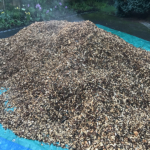 ,
, 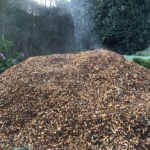 ,
, 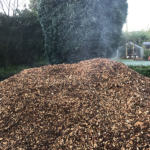 ,
, 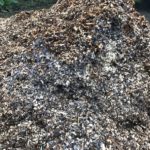
-
MK is 59 years old and presented with right sided pleuritic chest pain and coughing over 1 week. A chest Xray and then CT scan revealed complete collapse of her right lower lobe and middle lobes. Mucous retention is seen just proximal to the abrupt cutoff. There was mild bronchiectasis.
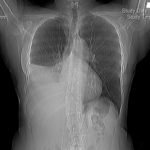 ,
, 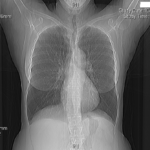

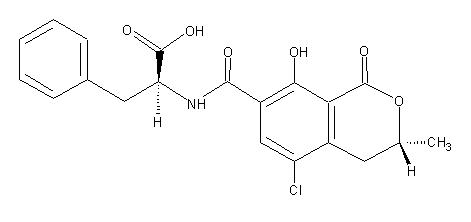

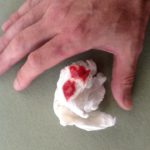 ,
,  ,
, 